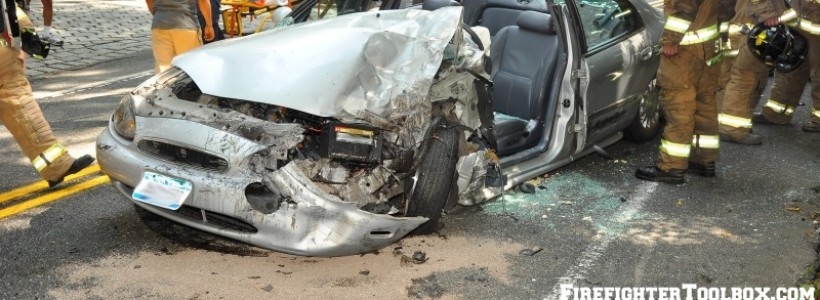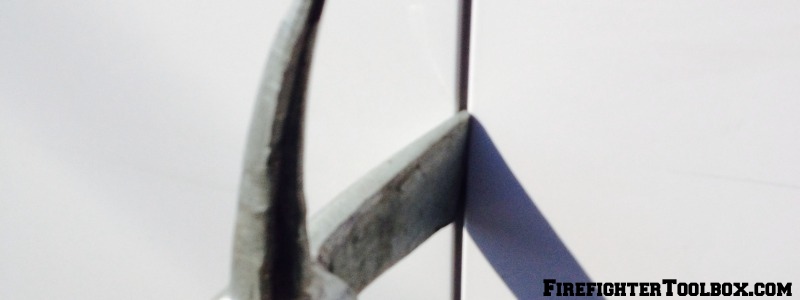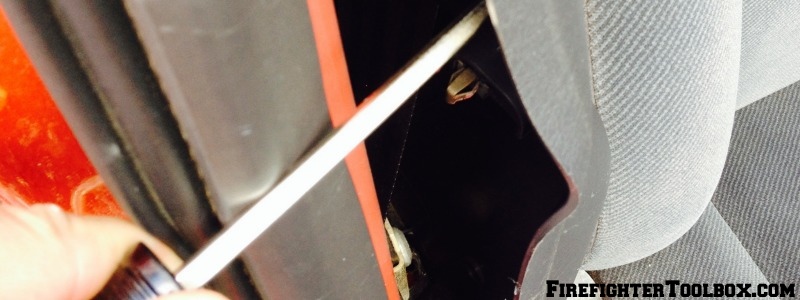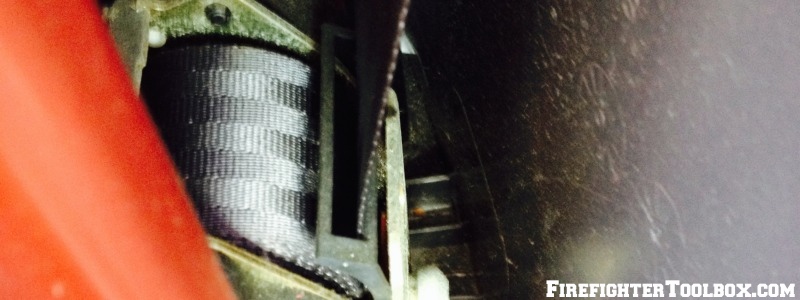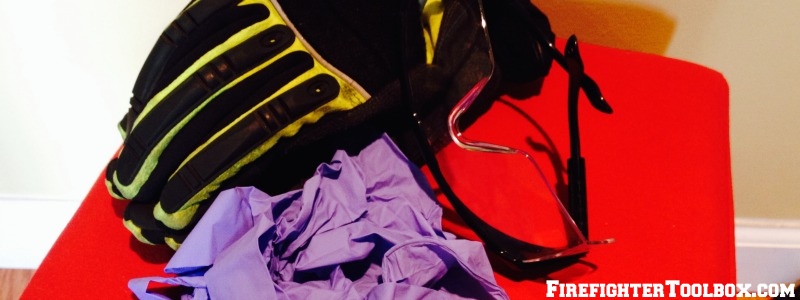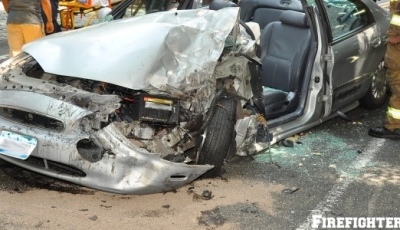8 Fundamentals of Extrication – Part 2
In the last article I covered the first 4 fundamentals of carrying out an extrication at a motor vehicle accident (MVA). Today we will cover the last 4.
#5 – Taking The Glass & Covering The Patient
If you need to take the glass, it is imperative to cover the patient. A wool blanket works, as well as a “space” type blanket.
Cover the patient completely as well as the EMT or firefighter inside the car with the patient.
Taking the glass can be done in a couple of different ways. You can use a center punch or the pike of a Halligan. You can use duct tape on the glass and make a little “handle” with another piece of tape. When you take the glass it will all come out in one piece. Works great!
#6 – Purchase Points
Prior to putting the “tool” into service you have the opportunity to make some purchase points to facilitate a smooth operation.
There are many ways to make purchase points; probably the easiest is using the Halligan. Place the adz into the door and move it up and down. You can use a tool such as a Hydra-Ram as well and even the spreaders themselves by grabbing a tip of the door and peeling it back.
#7 – Peel & Peek
There are certain things we want to stay away from cutting during operations. Air bag canisters as well as seat belt tensioners are just two worth mentioning. What you can do to avoid this is to “peel and peek” the interior of the vehicle quickly.
After you have the glass cleared, you can take a small pry bar or officer’s tool and peel some of the interior plastic back so you can visualize where the “stay away’s” are inside.
Keep in mind the 10-10-20 rule while you are operating on the interior. Stay 10 inches from steering wheel airbags, 10 inches from seat and side curtain airbags, and 20 inches from passenger side airbags. Taking two minutes to do this quickly will help ensure a smooth and — most importantly — a safe operation.
#8 – Personal Safety Precautions
Our personal safety is, of course, imperative. Aside from our standard PPE, a few additions are worth mentioning when it comes to motor vehicle accidents.
Extrication Gloves – Extrication gloves are great to have while operating at a motor vehicle accident. They protect your hands from metal and glass very well and offer much more dexterity than our conventional firefighting gloves.
Eye Protection – While our helmets usually have a flip down shield or a set of Bourkes it is advisable to also have a set of safety glasses. These can be kept in your radio pocket or anywhere else you have some room, but safety glasses offer added protection above the shield or Bourkes.
EMS Gloves – It is no secret that a motor vehicle accident can be quite bloody if there are serious injuries. EMS gloves that you can wear offer added protection that you need. They can be worn underneath your extrication gloves or, if you are operating in the car, they can be worn alone. In my opinion these are an absolute necessity at a serious accident; everyone should have them on.
As you can see there are many things that we can take care of prior to actually extricating the patient or patients. If we take care of each of the topics discussed above, we help to ensure that the extrication will go smoothly and most importantly safely.
If you have any further tips or items to be discussed please leave them in the comments section.
Photos courtesy of Steve Silverman and Rob Fling.

